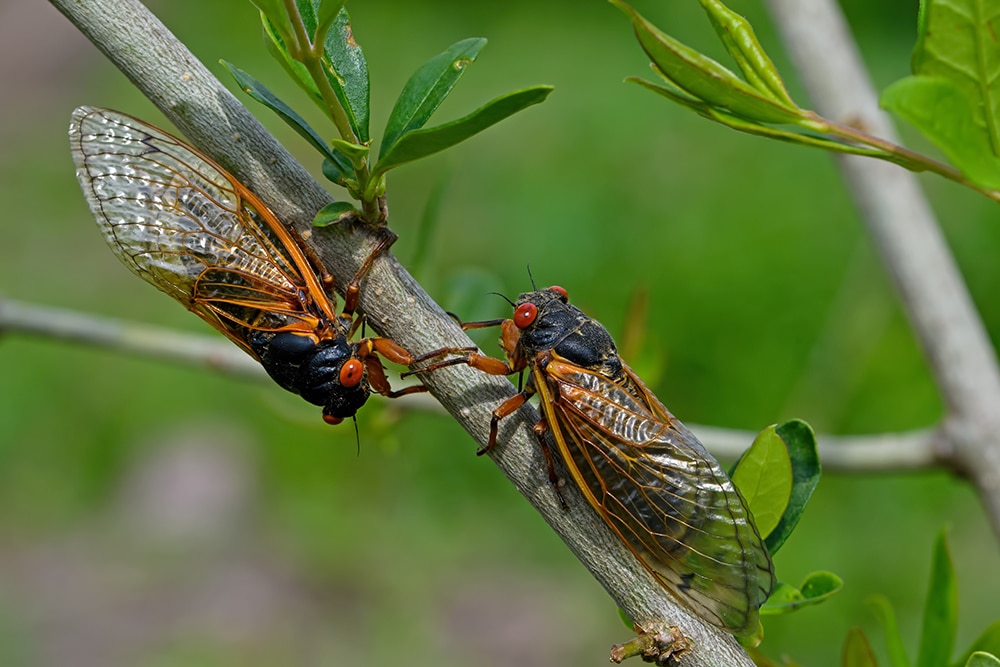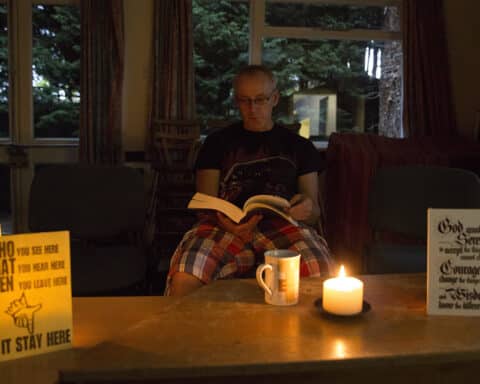Until we moved to Huntington, Indiana, my experience with cicadas was limited. I knew these odd, alien-looking bugs only from our family reunions over Labor Day weekend in southern Indiana, where annual cicadas are common, and an experience with the periodical Brood X cicadas on a vacation out to Washington, D.C., 34 years ago.
When the Richert family reunion was still held at my great-grandparents’ farm near Elizabethtown, Indiana, I would find the clear and crackly exoskeletons of cicadas hanging by their front legs from the shaggy bark of the eastern red cedar in the front yard of the farmhouse. As the men of the family stayed up until the early morning hours roasting the pig and playing euchre, the constant chorus of cicadas often threatened to drown out the storytelling of the older generation and their debates over national politics.
In 1987, I saw abundant evidence of Brood X from the back seat of our Chevy Impala station wagon as we drove through Pennsylvania. The cicadas were particularly voracious that year, and entire mountainsides were stripped bare of foliage. Growing up in west Michigan, I’d seen tent worms denude a good portion of a tree, but this was something else entirely. The destruction was awe-inspiring, in a terrifying way.
This is our fifth summer in Huntington, and while the predicted Grand Guignol of Brood X cicadas never materialized here in the late spring and early summer, the annual cicadas were out in full force this August, with one change from the previous four years: They seemed to be everywhere on sidewalks and lawns. Walk more than a few feet from the house to the car, and you were almost certain to see a cicada.
I’m not sure why the annual cicadas were so conspicuous this year. At 53 years old, I think I could count on one hand the number of living cicadas (as opposed to their abandoned exoskeletons) I’d seen before this August.
Yet in all of those years since I first asked my father where that constant, strumming noise hanging over the fields at my great-grandparents’ farm was coming from, I’d never doubted the existence of cicadas, even before I saw my first exoskeleton. I took on faith the knowledge that my father had handed down to me, and that his father had handed down to him (and his before him, for generations back to the 1830s, when our family first settled in Harrison County, Indiana). I didn’t actually need to see a cicada to believe that they existed. That late summer sound and fury signified something, and my father, in telling me what it signified, spoke with the weight and authority of generations of experience.
Now that seeing cicadas has become a mundane experience, I have come to realize that they were just as real to me when my experience of them was largely confined to their constant chorus from evening until morning and the occasional exoskeleton clinging to a cedar tree and their devastating effects on a Pennsylvania mountainside and the testimony of a man I trusted. Those signs of their existence brought them often to the front of my mind, while, paradoxically, stepping over the iridescent bugs with googly eyes has caused them to fade into the background of my days.
As the Catechism of the Catholic Church reminds us, signs can have great power: “The sacraments are efficacious signs of grace, instituted by Christ and entrusted to the Church, by which divine life is dispensed to us.” We cannot see the grace God grants us through the outward signs of the sacraments, but we know by those signs that the grace of the sacraments is no less real than the unseen cicadas trilling in Indiana treetops in the dog days of summer.
Scott P. Richert is publisher for OSV.





